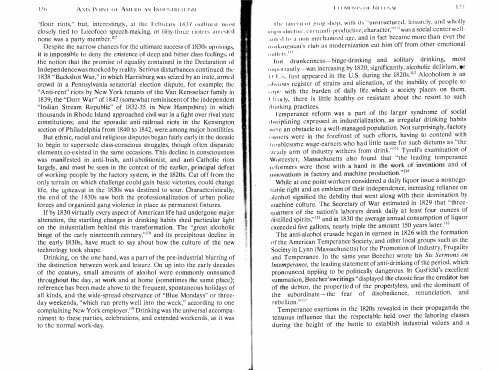CONTENTS - ouroboros ponderosa
CONTENTS - ouroboros ponderosa
CONTENTS - ouroboros ponderosa
Create successful ePaper yourself
Turn your PDF publications into a flip-book with our unique Google optimized e-Paper software.
[ .).(1 /\ .\. IS 1'(lINT ()] Af\..ll l.: lt .. \N IN11l 1'.IHI.\J 1'.1\1<br />
"tlollr riots," but, interestingly, at UH .: . l'-d)J L1al"Y I K.n ()ulhllJ"st 1I10.'i[<br />
closely tied to Locofoco speech-making, of fi fty-tlnee lioiels '" I,"slt·"<br />
none was a party member .1 07<br />
Despite the narrow chances for the ultimate success of IH30s uplisillgs,<br />
it is impossible to deny the existence of deep and bitter class feelings, III<br />
the notion that the promise of equalily contained in the Declaration of<br />
Independencewas mocked by realily. Serious disturbances continued: the<br />
J 838 "Buckshot War," in which Harrisburg was seized by an irate, armell<br />
crowd in a Pennsylvania senatorial election dispute, for example; the<br />
"Anti-rent" riots by New York tenants of the Van Rensselaer family ill<br />
1839; the "Dorr War" of 1842 (somewhat reminiscent of the independenl<br />
"Indian Stream Republic" of 1832-35 in Ncw Hampshire) in whicl,<br />
thousands in Rhode Island approached civil war in a fight over rival state<br />
constitutions; and the sporadic anti-railroad riots in the Kensington<br />
section of Philadelphia from 1840 to 1842, were among major hostilities.<br />
But ethnic, racial and religious disputes began fairly early in the decade<br />
to begin to superscde class-conscious struggles, though often disparate<br />
elements co-existed in the same occasions. This decline in consciousness<br />
was manifested in anti-Irish, anti-abolitionist, and anti-Catholic riots<br />
largely, and must be seen in thc context of the earlier, principal defeat<br />
of working people by the factory system, in the 1820s. Cut off from the<br />
only terrain on which challenge could gain basic victories, could change<br />
life, the upheaval in the 1830s was destined to sour. Characteristically,<br />
the end of the J 830s saw both the professionalization of urban police<br />
forccs and organized gang violence in place as permanent fixtures.<br />
If by 1830 virtually every aspect of American life had undergone major<br />
alteration, the startling changes in drinking habits shed particular light<br />
on the industrialism behind this transformation. The "great alcoholic<br />
binge of the early nineteenth eentury," 108 and its precipitous decline in<br />
the early 1830s, have much to say ahout how the culture of the new<br />
technology took shape.<br />
Drinking, on the one hand, was a part of the pre-industrial blurring of<br />
the distinction between work and leisurc. On up into the early decades<br />
of the cemury, small amounts of alcohol were commonly consumed<br />
throughout the day, at work and at home (sometimes the same place);<br />
reference has been made above to the frequent, spontaneous holidays of<br />
all kinds, and the wide-spread observance of "Blue Mondays" or three<br />
day weekends, "which run pretty well into the week," aceo - rding to one<br />
complaining New York employer.' Cl9 Drinking was the universal accompa<br />
niment to these parties, celebrations, and extended weekends, as it was<br />
to the normal work-day.<br />
1·.l l rv !l·N J .... 4 )1 I":I I II',:\J<br />
liB" lavI'1 JJ III ",lUg shop. with its " u llsl ructured, lcislIrt.:iy. and wholly<br />
1 111 1 111 IdlWI iv(". eV('11 allti-proliudive, character,'> ! \0 was a social center well<br />
.llIlnt 1(1 ;1 11(111 mechanized age, and in fact became more than ever the<br />
\\., ,1 kllll.',111;(Il'S duh as modernization cut him off from other emotional<br />
, ,"llds. 111<br />
\lui drunkenness-binge-drinking and solitary drinking, most<br />
""I "" lal1tly -was increasing by 1820; significantly, alcoholic delirium, or<br />
II I' 's, first appeared in the U.S. during the 1820s.112 Alcoholism is an<br />
"Iovi(1"S registcr of strains and alienation, of the inability of people to<br />
• " 1 ''' with the burden of daily life which a society places on them.<br />
I "'"dy, there is little healthy or resistant about the resort to such<br />
til irlking practices.<br />
temperance reform was a part of the larger syndrome of social<br />
'ILsciplining expressed in industrialization, as irregular drinking habits<br />
w






